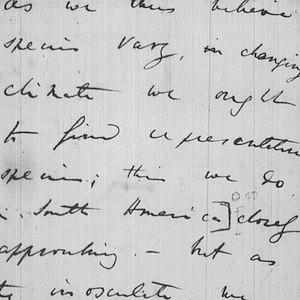-
-
Step-by-step course guide
-
What you will learn in this course
-
About the course: David Kinney & Simon DeDeo
-
Introducing the course Teaching Assistant
-
Join the discussion
-
-
-
Introduction to Humanities Analytics
-
-
-
-
Analyzing "Excellence" in the Humanities
-
-
-
-
-
-
Case Study: Capitalism & Democracy
-
Chapter 5 part 1 Overview
-
The Marriage of Capitalism & Democracy part 1
-
Test Your Knowledge part 1
-
Test Your Knowledge part 1: Explanations
-
Chapter 5 part 2 Overview
-
The Marriage of Capitalism & Democracy part 2
-
Test Your Knowledge part 2
-
Test Your Knowledge part 2: Explanations
-
Assignment: Case Study: Capitalism & Democracy
-
-
-
-
-
Measurement & Operationalization
-
-
-
A Philosophical Approach to Probability
-
-
-
Guest Lecture: Marco Buongiorno Nardelli
-
-
-
-
-
Guest Lecture: Nan Z. Da
-
-
-
Wrap-Up
-
What's Next
-
7.1 Patterns » Chapter 4 Overview
What you will learn in this chapter
The broad principles behind the discovery, analysis, and discussion of patterns in humanities analytics. You will also learn about the crucial relationship between research questions and patterns, and specifically the way in which good research questions tend to be questions about the patterns that we care about. You will gain an understanding of the extent to which a pattern-finding approach is particularly well-suited for computer-assisted projects in humanities analytics. You will encounter the challenges associated with discovering and understanding patterns and relating those patterns back to aspects of lived experience.
Key terms to keep in mind
Pattern There are so many ways to define this word, and so many ways to understand the underlying concepts! For simplicity, we’ve chosen a broad definition: a pattern is a habit of thought, speech, or action. A pattern can be tightly confined to a particular work or context, such as the pattern of expectations set up in the first line of a sonnet. It could also be a historical pattern unfolding over the course of hundreds or thousands of years, or over the course of multiple texts.
Interpretable machine learning Machine learning techniques that recognize patterns in such a way that humans can recognize and understand the significance of the pattern discovered. Interpretable machine learning matters for humanities analytics, because we want to go beyond e.g. "prediction”, to learn on what basis that prediction was made.
An example from Chapter 1 is the signal detection in the Old Bailey study: the methods were interpretable so the authors could not only observe the change in the signal, but also ask what kinds of ideas were contributing to the signal. Another example comes from the French Revolution work described: the authors were able to observe e.g. the type of content that Robespierre surfaces for the first time.
Interpretable machine learning has implications much broader than humanities analytics. It is a critical question for fairness and justice in a modern era where machine learning is used to make political and judicial decisions. For more on this, see the “Wrong side of the tracks” paper (in Supplementary Material).
Operationalization of a research question The process of translating a traditional humanities research question into the type of question that can be input into a computer program, which will then attempt to generate an interpretable answer. To illustrate, we might operationalize the research question "How do blurb writers praise their subjects?" into the more machine-friendly question, "How is the pattern of talking about genius in terms of illumination realized in a corpus of blurbs?".
Fundamental patterns Patterns that are informative as the nature of the process by which the data in which they are discovered are generated. A fundamental pattern detected in the Old Bailey proceedings, for example, was language associated with medical terminology: this connected to a new concern to track the details of violent acts (the length of a scar, the damage to a victim’s organs, etc). Medical terminology was a tracer of a basic pattern associated with a new form of sensitivity to the integrity of the body.
Epiphenomenal patterns Patterns that are present in a data set but are not informative as to the true nature of the process by which those data are generated. A classic example of an epiphenomenal pattern is the association between a person’s salary in their first job, and if that person plays squash. There’s no intrinsic connection between the game of squash and competence at a high-paying job. But squash is a rather niche game, commonly played by wealthy people, and wealthy people often have better connections through which to acquire high-paying jobs.
Validation problem The challenge of distinguishing between fundamental and epiphenomenal patterns.
Lived experience of patterns The experience of encountering a pattern in real life, as opposed to the "cold" patterns uncovered by computational methods. We can connect machine-discovered patterns to the lived experience of patterns by connecting them to things that people care about in real-world contexts. “Lived experience” is a common term with a long philosophical history found in a great diversity of writers including Jean Paul Sartre and Martin Heidegger.
